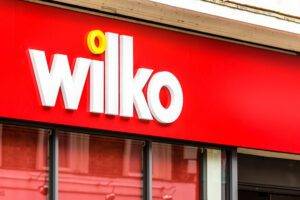Wilko, the well-known High Street homeware retailer, has recently collapsed into administration, unable to secure a rescue deal.
With 400 shops and 12,500 workers at stake, the future of the company hangs in the balance, I look at the reasons behind its downfall, and the potential implications for its employees and the retail industry as a whole.
The Current Situation
Despite entering administration, the stores will remain open for the time being, ensuring that there are no immediate job losses and employees will continue to be paid. PwC has been appointed as the administrator and will actively seek a potential buyer for the entire business or its parts. The collapse of Wilko, if no resolution is found, could mark one of the biggest casualties on the High Street this year.
The Factors Leading to Collapse
Wilko’s demise was not an overnight event; the company has been grappling with various challenges for some time. The depths of its problems became apparent when it announced its intention to appoint administrators, giving the company a 10-day window to secure a rescue deal. However, despite receiving a significant level of interest, Wilko was unable to strike a deal within the necessary timeframe, leading to its unfortunate collapse.
Missed Opportunities
The collapse of Wilko comes as a blow to many, with the GMB union arguing that it was entirely avoidable. According to the union, warnings were repeatedly given about the retailer’s potential to capitalize on the growing bargain retailer market, but the company failed to seize this opportunity. This missed potential is a clear indication that Wilko failed to adapt to the changing retail landscape and capitalize on emerging trends.
Financial Struggles
Wilko’s financial struggles were a significant contributing factor to its downfall. The company has been burdened with sharp losses and a severe cash shortage. In an attempt to alleviate the financial strain, Wilko borrowed £40 million from Hilco, a restructuring specialist. Despite these efforts, the company’s financial position remained precarious, ultimately leading to its administration.
Fierce Competition
Wilko faced intense competition from rivals such as B&M and The Range, exacerbating its financial woes. As the high cost of living pushed shoppers to seek out bargains, these competitors emerged as popular alternatives. Moreover, Wilko’s traditional town centre locations proved to be an expensive liability as customers increasingly shifted to larger retail parks and out-of-town locations.
Lack of Investment and Adaptation
One of the key factors contributing to Wilko’s downfall was a lack of investment in systems and infrastructure. The company failed to modernize and adapt its operations to meet the demands of a changing retail landscape. With a large estate of over 400 stores, Wilko needed significant investments to remain competitive, but these investments were not made. Consequently, the company found itself unable to keep up with emerging consumer behaviors and mounting challenges.
Economic Challenges
Wilko’s collapse also reflects the broader economic challenges faced by many High Street retailers in recent years. Reduced consumer spending, inflationary pressures, and increasing costs have had a significant impact on the retail sector as a whole. As a result, many retailers, including Wilko, have struggled to survive in this challenging environment.
Impact on Employees and Communities
The collapse of Wilko has significant implications for its employees and the communities it serves. With 12,500 workers at risk of losing their jobs, the immediate concern is the economic and psychological impact on individuals and families. Furthermore, the closure of Wilko’s stores could have a detrimental effect on the local communities, leading to reduced footfall, job losses in associated industries, and a decline in the overall vitality of the affected areas.
Pension Scheme and Deficit
Another concern arising from Wilko’s collapse is the potential impact on its pension scheme. Thousands of Wilko workers are members of the company’s pension scheme, which reportedly has a sizable deficit. The Pensions Regulator is currently in discussions with the employer and scheme to protect the interests of the scheme members during this challenging time.
Future Prospects
While the immediate future of Wilko remains uncertain, there is hope that a buyer may be found to rescue the company, either in its entirety or in parts. PwC, as the appointed administrator, will continue conversations with potential investors to explore all possibilities for the business. However, if no resolution is found, store closures and redundancies may become inevitable.
Wilko’s collapse into administration highlights the challenges faced by High Street retailers in an ever-evolving retail landscape. The company’s failure to adapt, coupled with financial struggles and fierce competition, ultimately led to its unfortunate demise. As Wilko’s future hangs in the balance, the impact on its employees and the retail industry as a whole remains to be seen. The collapse serves as a stark reminder of the need for retailers to stay agile, invest wisely, and anticipate changing consumer behaviors to secure their place in the evolving marketplace.
Read more:
As Wilko falls into administration: We look at the High Street retailer’s struggles

